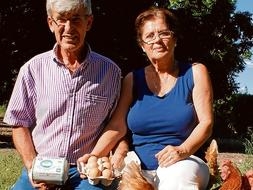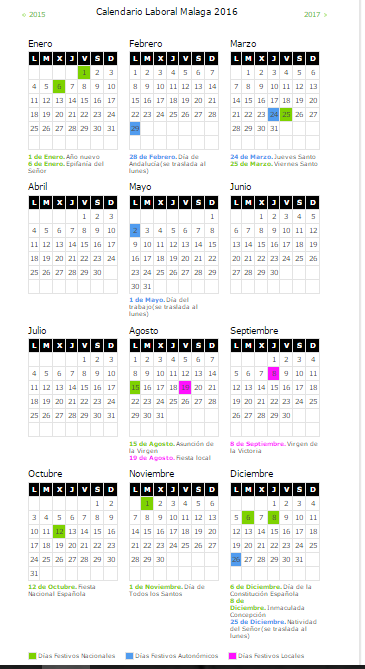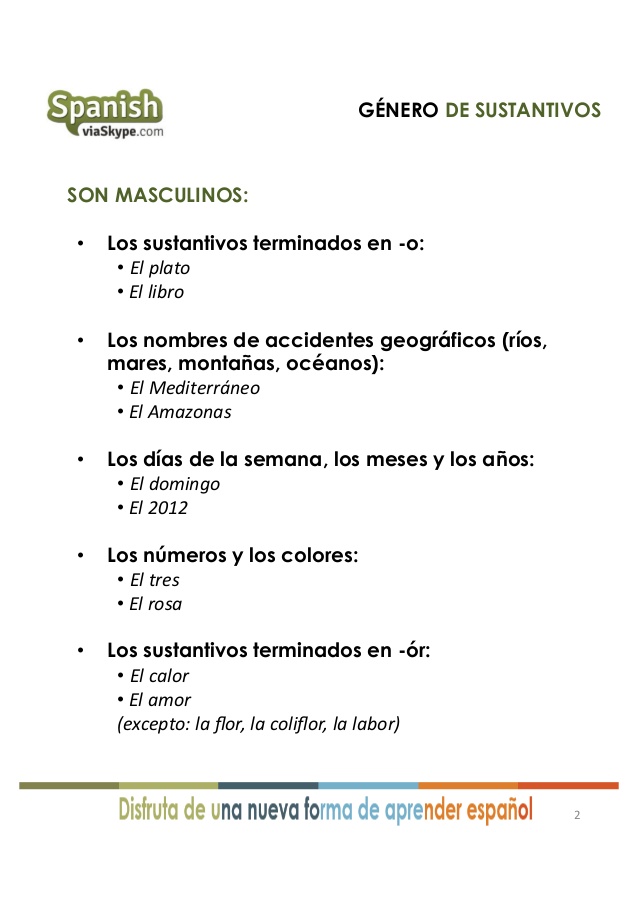In Spain, the celebration of the Spanish Constitution of 1978 (on 6th December) and the Immaculate Conception (on 8th December ) form one of the most important "bridges" in the calendar; which opens the doors of Christmas.
"Long Weekend" or "bridge" are expressions used in Western countries to refer to a period of holidays or vacations. It is formed by joining a holiday with another, or a weekend. In some places, it is used the term "sandwich" to refer to a weekday located between two holidays, and this one is considered not working.
In December, the "twenty-fifth or Christmas Day" with its"Christmas Eve"(24th); the "First Day of January or New Year" with its New Year´s Eve (31st). The Sixth of January, Epiphany or "Three Wise Men" is very popular with children because they traditionally receive presents in Spain.
In the US, the fourth Thursday of November celebrates the traditional "Thanksgiving Day"; and it is bound to Friday normally considered non-working day plus the weekend. Friday is considered an unofficial holiday known as Black Friday, which begins the holiday shopping season. Many shops open their doors early and offer discount products to attract the public.
In the UK, a "long weekend" it is called "bank holiday" when the holiday is on Friday or Monday. In French culture exists equivalent: "faire le pont", and between Italian and Portuguese: "the ponte". In Germany and Switzerland: "brückentag".
Non-working days
In Spain, a worker usually has 15 public holidays per year: 12 days are national holidays, 2 local and one regional. Like Spain, all countries have a number of non-working days - from 10 to 15- are distributed throughout the year. Most states of the European Union have this figure, although the economic problems have led to the reduction.
In spring we celebrate Easter, religious holiday for Christians. Non-working days are Maundy Thursday and Good Friday. In general, these dates are holidays to rest or travel. The first day of May, as in many other countries, is celebrated "International Labor Day."
The fifteenth of August is the "Day of the Assumption of the Virgin". In Malaga, it is the main day of the "Fair" which takes place during this week. In Andalusia, we celebrate the twenty-eighth of February, date of the adoption of the Statute of Autonomy.
The twelfth of October, the festival is civil and religious. The "Columbus Day", both in Spain and Latin America remember the discovery of America. It is also the celebration of the Virgen del Pilar, patron saint of Spain.
The first of November is the "Day of All Saints." It is typical to visit and bring flowers to the cemetery.

Pepe Urbano and Toñi Hevilla with their “happy hens”. :: Ángel de los Ríos
Noa runs barefoot through the vegetable plot, finds a fig and eats it with a clear delight that would surprise many town-dwelling parents. Noa is nearly three and figs are one of her favourite fruits.
“Children love growing up in the countryside. They learn to be patient, that they can eat these three strawberries which are red today, but if they want more they’ll have to wait until tomorrow,” says Noa’s mother, 37-year-old Cristina Lucas, who until three years ago used to live and work in Seville, as did her husband, who was an engineer for Renault. They both felt the call of the countryside, if not the wild, when Noa was conceived, and they have ended up in Coín, where their vegetable plot makes them self-sufficient, and they organise courses in ecological farming (www.cursoagriculturaecologica.com).
Cristina and Juan Luis don’t feel out of place in the Guadalhorce Valley. They are not the only young people to have moved from a city to the countryside, the opposite route to that which thousands of rural residents have been taking for decades.
They were seeking personal change, as the founders of Caña Dulce did 15 years ago: Caña Dulce, also in Coín, is devoted to permaculture, a philosophy of life which covers everything from sustainable agriculture to bioconstruction and yoga.
However, in the increasingly popular ‘eco’ lifestyle in this region of Malaga there are other profiles, too: people who want an alternative type of self-employment, those who decide to use a family plot as a source of extra income and farmers who have been converted to the idea of ecological production because it is more profitable.
The so-called ‘garden of Malaga’ is becoming green again thanks to the increase in ecological production, which has boosted the economy and the self-esteem of an activity which had lost its popularity.
Pepe Urbano is one of them. He and his family set up the first ecological chicken farm in the province on a two hectare site in Coín. As well as producing free range eggs from what Pepe calls his “happy hens”, the family grows pecan nuts. “Ecological produce has become fashionable, but it isn’t just a matter of the label. You have to believe in it,” insists Pepe.
Sebastián also stresses that this type of agriculture boosts other businesses. There are now more suppliers, fertiliser companies and industries which make bread, preserves, olive oil, cheese etc., in the ‘eco garden’ of Malaga province.
Joining a cooperative
One indication of the volume of business is the Guadalhorce Ecológico cooperative. It was formed by the association of the same name, brings together about 20 producers and provides work for five people in its premises in Alhaurín el Grande. The president of this cooperative, Miguel Angulo, says both production and consumption have grown in recent years and that this ‘eco revolution’ has had a dynamic effect on the area.
The recovery of traditional agriculture has also achieved something spectacular: consumers in Malaga have finally become enthusiastic about buying local produce.
“Our best products have always been sent elsewhere because people in Malaga were only interested in the price,” explains Sebastián.
In the beginning, ecological products from the Guadalhorce region were also exported abroad or, at least, were sent to northern Spain.
That has changed now, though, and much of the credit goes to the farmers’ markets organised by the Guadalhorce Ecológico association, which has been gradually raising awareness among consumers in Malaga.
These markets, which now regularly take place in six municipalities in the province, started in Coín nearly ten years ago. Between 15 and 22 producers from the region participate.
“The markets are very important because they bring consumers face to face with the producers and they then understand how this tomato or that cheese which they are going to eat is produced,” says Sebastián.
These markets have also led to something else which is new for Malaga: home deliveries of organic seasonal fruit and vegetables, either by individuals or through associations or consumer groups.
“This is something which is spreading through word of mouth. People are now organising regular deliveries to their places of work, for example,” explains Sebastián.
Worried about health
There are various reasons for the increasing popularity of organic products, including health concerns, an increasing interest in gastronomy and the work done by chefs from Malaga in stressing the quality of local produce.
Price is also a factor.“It is not true that ecological products are more expensive. We did a study in Malaga some time ago which showed that the fruit and vegetables our farmers sell are no more expensive than in the big stores,” insists Sebastián Hevilla.






















